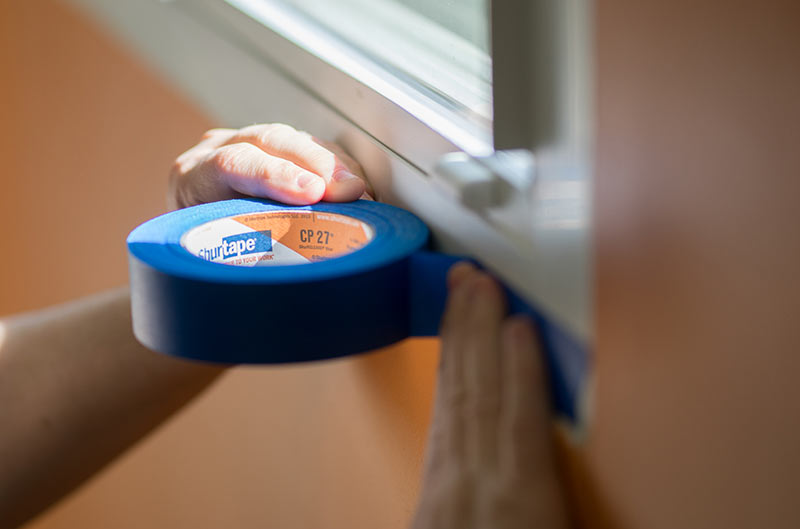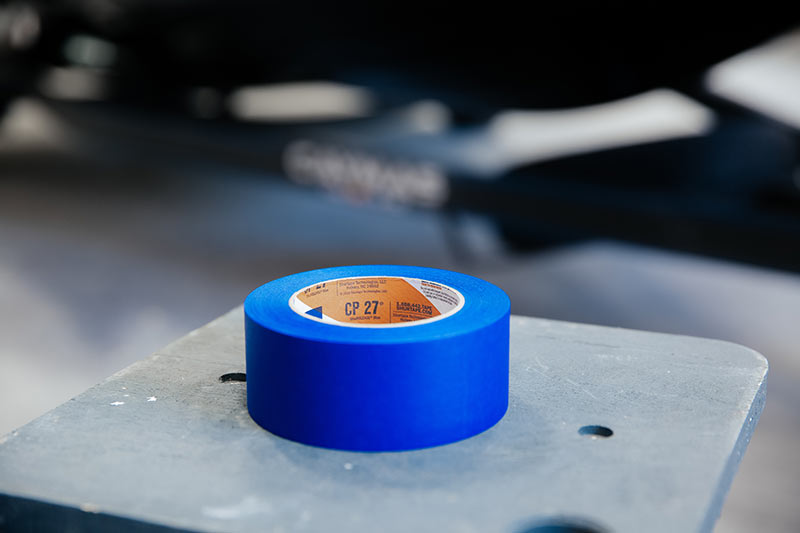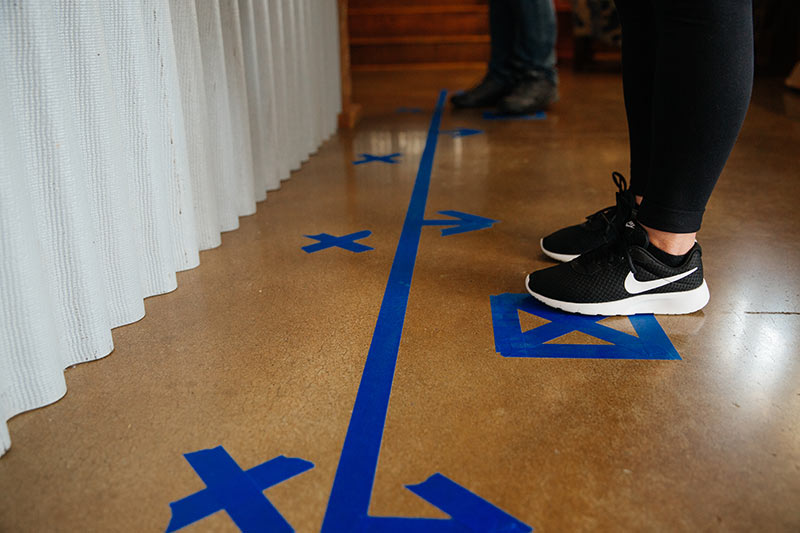Only Using Blue Tape for Painting Projects? Wait Until You See What Else It Can Do.
By Patti LaPorte, Director, Paint and Masking Tapes, Shurtape Technologies, LLC

Known for its solid stick, easy release and ability to create clean lines, blue tape, or “painter’s tape” as it’s often called, has always been an essential tool among painting pros. But the tape’s uses shouldn’t be limited because of a popular nickname. A quality blue tape is a multi-functional toolbox staple that adds efficiency to general contractors’ jobsites and can be a go-to tape for those responsible for industrial maintenance, repair and operations projects.
To help you unroll the benefits of blue tape for your trade, here is a list of alternative uses that demonstrate the versatility of blue tape with painting and beyond, plus some tips for selecting a quality blue tape to ensure you get the most from its performance.
Put Blue Tape to Work
Trade professionals often have a set of go-to tools that consistently deliver dependability and versatility in solving on-the-job problems, and these criteria are the reasons blue tape has found its place among them. Its reliable adhesion and ability to stay in place for up to two weeks while still cleanly releasing from most surfaces are just some of the many features that allow it to perform in different environments and applications. Here’s a look at some of the many ways tradespeople are putting blue tape to work.

REPAIRS
- Fixing or patching broken materials or equipment until a replacement part arrives or full repairs can be made.
PROTECTING SURFACES
- Masking a surface to protect it from overspray, debris or damage.
- Seaming and sealing of temporary coverings, such as poly sheeting and corrugated plastic, to protect walls, floors, carpet or casework in a construction site or shield nearby equipment in an industrial facility.
SAFETY
- Temporarily securing items in place, such as taping up cords or taping down floor coverings to keep the work area safe.
- Bundling wires, cords, ropes or other loose items that could create tripping hazards.
- Temporarily marking safe zones on floors or walls within a work area.
CLOSING & SEALING
- Goosenecking waste containment bags to secure, waterproof and particle-proof the bag, and prevent the contents from falling out.
- Taping supply cartons or packages closed, especially when they will need to be reopened or reused.
- Splicing and connecting worksite materials, such as fabric, foam, paper or film.
COMMUNICATION
- Color-coding tools and equipment to indicate its use or task.
- Labeling tools, PPE, stored items, supplies or personal belongings.
- Floor marking or wall marking to direct traffic or indicate placement of items, equipment or personnel.

Quality Counts
Todd Haight, vice president of site operations with HIIT Contracting in Atlanta, has worked in the industry for 33 years, and primarily uses blue tape for protecting existing finishes. Specializing in mixed-use industrial construction and office spaces, Haight and his crews depend on blue tape to hold corrugated plastic sheets in place to shield lobbies, restrooms and other occupied spaces during fit-outs.
In the past, Haight had problems with inexpensive, low-quality tape, as its hold would fail, and the protective corrugated sheets would fall. “Covering new and existing finishes might cost $3,000 in materials, and I can’t afford to have to cover the area again,” explains Haight.
After switching to a high-quality tape that delivers up to 14 days of reliable adhesion, HIIT Contracting is no longer having problems with the corrugated sheets falling. “I need it to be once and done, and now that I am using a quality tape, I can count on that,” he says.
To make sure you get a dependable blue tape, look for these signs of quality:
- Adhesion
For a blue tape that will stick to a variety of surfaces in your daily tasks, choose a multi-surface tape. Surfaces appropriate for a quality blue tape can include drywall, glass, plastic, metal, vinyl and unfinished wood.
- Durability
Blue tape is primarily used for temporary placement, which is why its clean release is a critical characteristic of its performance. Low-quality tapes can shred coming off the roll or during removal, which can cause inefficiencies that add up to significant time wasted over the course of a project. A high-quality blue tape, on the other hand, will easily release from the roll and from a number of different types of surfaces and will stick for up to 14 days.
- Temperature Rating
If you need a blue tape that can take the heat and still remain on a surface, look for a brand that is rated for 50 F to 200 F (10 C to 93 C) and for indoor and outdoor use.
Get to Work
Like any good tool, blue tape can help you increase productivity, reduce rework and improve worksite safety, when you know how to use it and you invest in quality. Next time you are restocking your truck or tool kit to head out to the jobsite or into the plant, take a roll of blue tape with you. Now you know exactly where it will come in handy.
Patti LaPorte is director, paint and masking tapes for Shurtape Technologies, LLC.




